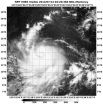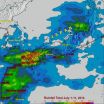(Press-News.org) As government agencies recommend greater consumption of seafood for its health benefits, a new analysis led by researchers from the Johns Hopkins Center for a Livable Future urges medical and public health professionals to consider the environmental and health impact of seafood sourcing, particularly aquaculture, or the farming of fish, shellfish and crustaceans. The paper appears in the July 2014 issue of the Journal of Current Environmental Health Reports.
Nearly half of all seafood consumed around the world comes from fish farms. Increasing seafood consumption has been proposed as part of a strategy to combat the global epidemics of obesity and diabetes. In addition, the U.S. Food and Drug Administration and the U.S. Environmental Protection Agency now recommend pregnant women, nursing mothers and young children increase their seafood consumption to two to three servings per week of low-mercury fish.
"While increased seafood consumption comes with many health benefits, we can't ignore the clear warning signs that we are rapidly approaching the limits of wild fish that can be caught," says David C. Love, PhD, MSPH, senior author of the study and an assistant scientist with the Johns Hopkins Center for a Livable Future at the Johns Hopkins Bloomberg School of Public Health. "To fill this gap, aquaculture is replacing natural fisheries as a major source of edible seafood. Many aquaculture methods are safe and sustainable. However, some methods pose unnecessary risks to public health and deplete natural resources."
Overfishing has depleted wild fish stocks and damaged marine resources, and fish farms have moved in to fill some of the gaps. But farmed seafood is not without risk. It often contains the same contaminants, such as heavy metals, that are found in nature. Meanwhile, the fish are given feed medicated with antibiotics to ward off disease or treated with chemicals, which can end up in the water supply.
Aquaculture further contributes to the reduction of fish stocks because wild fish are often used for feed.
On the plus side, aquaculture operations can provide jobs in coastal communities where people once depended on fishing for their livelihoods.
Researchers recommend applying and expanding the One Health approach, an existing interdisciplinary model that brings together human, animal, and environmental health services to address issues related to aquaculture. One Health has historically focused on infectious diseases that pass between animals and humans, but the researchers say it could bridge the gap between the desire to have enough seafood to satisfy consumer demand and the effects of farming on the environment. Recommendations for increasing seafood consumption must be balanced with risks of further damage to fisheries and risks to public health and the environment from some forms of aquaculture, they say.
"The ideal aquaculture operations that consumers should support are ones that produce nutritious seafood, provide a high quality of life for workers, and conserve resources for future generations," Love says. "This study promotes a multi-stakeholder approach to reforming and developing an aquaculture industry that operates sustainably and contributes to human diets that promote health."
INFORMATION:
"Public Health Perspectives on Aquaculture" was written by Juan G. Gomez, Jillian P. Fry, Marcia Erazo and David C. Love.
The research was supported by the Johns Hopkins Center for a Livable Future with funding from the Grace Communications Foundation.
Rethinking fish farming to offset its public health and environmental risks
Aquaculture is source of nearly half the world's seafood
2014-07-14
ELSE PRESS RELEASES FROM THIS DATE:
Expert collaboration is the key to sustainable fish and shellfish farming
2014-07-14
Getting more people to eat seafood because it's a healthier option will need careful planning to ensure that the expansion of the aquaculture sector does not pose a risk to the environment. Business leaders in the sector should not aim only for profits, but rather embrace the principles of the One Health model that sees the health of humans being interwoven with that of animals and the environment. The model brings together experts from various fields to develop sustainable operations that ensure adequate human nutrition, and healthy environments, say Juan Gormaz of the ...
Suomi NPP satellite sees Typhoon Rammasun approaching Philippines
2014-07-14
NASA-NOAA's Suomi NPP Satellite passed over Typhoon Rammasun early on July 14 and captured a visible image of the storm that showed large bands of thunderstorms wrapping into the center as it approached the central Philippines.
When NASA-NOAA's Suomi NPP satellite passed over Rammasun on July 14 at 04:20 UTC, the Visible Infrared Imaging Radiometer Suite (VIIRS) instrument aboard took a visible image of the storm. The VIIRS instrument showed large, thick bands of powerful thunderstorms wrapping into the low-level center of circulation. The largest band extended from the ...
MD Anderson researchers discover new route for ovarian cancer spread
2014-07-14
Circulating tumor cells spread ovarian cancer through the bloodstream, homing in on a sheath of abdominal fatty tissue where it can grow and metastasize to other organs, scientists at The University of Texas MD Anderson Cancer Center report in Cancer Cell.
"This completely new way of thinking about ovarian cancer metastasis provides new potential avenues to predict and prevent recurrence or metastasis," said senior author Anil Sood, M.D., professor of Gynecologic Oncology and Reproductive Medicine and Cancer Biology.
The researchers found the circulating tumor cells ...
NASA adds up Tropical Storm Neoguri's deluge from space
2014-07-14
The once-powerful Super Typhoon Neoguri weakened to a tropical storm when it dropped heavy rainfall over southern Japan during the week of July 7, 2014. NASA and the Japan Aerospace Exploration Agency's Tropical Rainfall Measuring Mission or TRMM satellite measured that soaking from its orbit in space and data was used to create a maps showing the rainfall totals.
Heavy rainfall from Neoguri fell on land that was already soaked earlier this month by a slow moving seasonal frontal system. Neoguri was reported to have caused up to five deaths and 50 injuries in Japan.
Rainfall ...
Say 'no' to interruptions, 'yes' to better work
2014-07-14
Modern office workers are expected to multitask regularly, often juggling multiple projects and priorities over the course of a day. Studies have shown that the typical employee in an office environment is interrupted up to six times per hour, but how does that impact the finished product? New research published in Human Factors evaluates how ongoing interruptions can negatively affect the quality of work.
"People don't realize how disruptive interruptions can be," said Cyrus Foroughi, coauthor of "Do Interruptions Affect Quality of Work?" and a PhD candidate at George ...
Sierra Leone samples: Ebola evidence in West Africa in 2006
2014-07-14
Analysis of clinical samples from suspected Lassa fever cases in Sierra Leone showed that about two-thirds of the patients had been exposed to other emerging diseases, and nearly nine percent tested positive for Ebola virus. The study, published in this month's edition of Emerging Infectious Diseases, demonstrates that Ebola virus has been circulating in the region since at least 2006—well before the current outbreak.
First author Randal J. Schoepp, Ph.D., recently returned from Liberia and Sierra Leone, where he spent six weeks helping to set up an Ebola testing laboratory ...
Scientists deepen genetic understanding of eosinophilic esophagitis
2014-07-14
WHAT:
Scientists funded by the National Institutes of Health (NIH) have identified genetic markers associated with eosinophilic esophagitis (EoE), an inflammatory disease characterized by high levels of immune cells called eosinophils in the esophagus. Their findings suggest that several genes are involved in the development of EoE, which can cause difficulty eating and often is associated with food allergies. The findings also may help explain why the disease specifically affects the esophagus. The work was supported in part by the Consortium of Food Allergy Research, ...
The Lancet Neurology: Personal View looks back on 40 years of the Glasgow Coma Scale
2014-07-14
A group of leading brain injury specialists look back on 40 years of the Glasgow Coma Scale and outline the continuing role of the scale in research and clinical practice, in a new Personal View published in The Lancet Neurology.
The Personal View is published on the 40th anniversary of the Glasgow Coma Scale's introduction in a 1974 Lancet article*. Since this seminal publication, the Glasgow Coma Scale has provided a practical method for bedside assessment of impairment of conscious level, the clinical hallmark of acute brain injury. The scale was designed to be ...
Story tips from the Department of Energy's Oak Ridge National Laboratory, July 2014
2014-07-14
To arrange for an interview with a researcher, please contact the Communications staff member identified at the end of each tip. For more information on ORNL and its research and development activities, please refer to one of our media contacts. If you have a general media-related question or comment, you can send it to news@ornl.gov.
MATERIALS – Rare earth substitute …
An alloy discovered at Oak Ridge National Laboratory holds great promise for permanent magnets as the material retains its magnetic properties at higher temperatures yet contains no rare-earth elements. ...
Using competitors' brand name as a keyword can backfire, INFORMS study finds
2014-07-14
Buying keywords of a popular competitors' brand names on search engines such as Google and Bing can backfire according to a new study in the Articles in Advance section of Marketing Science, a journal of the Institute for Operations Research and the Management Sciences (INFORMS).
Firms buy specific keywords, including competitors' brand names, on search engines to reach consumers searching for those words. Online advertisements employing such keywords are called search ads. Sometimes a brand such as Nissan Altima will buy search ads to reach customers who conduct a ...
LAST 30 PRESS RELEASES:
Making lighter work of calculating fluid and heat flow
Normalizing blood sugar can halve heart attack risk
Lowering blood sugar cuts heart attack risk in people with prediabetes
Study links genetic variants to risk of blinding eye disease in premature infants
Non-opioid ‘pain sponge’ therapy halts cartilage degeneration and relieves chronic pain
AI can pick up cultural values by mimicking how kids learn
China’s ecological redlines offer fast track to 30 x 30 global conservation goal
Invisible indoor threats: emerging household contaminants and their growing risks to human health
Adding antibody treatment to chemo boosts outcomes for children with rare cancer
Germline pathogenic variants among women without a history of breast cancer
Tanning beds triple melanoma risk, potentially causing broad DNA damage
Unique bond identified as key to viral infection speed
Indoor tanning makes youthful skin much older on a genetic level
Mouse model sheds new light on the causes and potential solutions to human GI problems linked to muscular dystrophy
The Journal of Nuclear Medicine ahead-of-print tip sheet: December 12, 2025
Smarter tools for peering into the microscopic world
Applications open for funding to conduct research in the Kinsey Institute archives
Global measure underestimates the severity of food insecurity
Child survivors of critical illness are missing out on timely follow up care
Risk-based vs annual breast cancer screening / the WISDOM randomized clinical trial
University of Toronto launches Electric Vehicle Innovation Ontario to accelerate advanced EV technologies and build Canada’s innovation advantage
Early relapse predicts poor outcomes in aggressive blood cancer
American College of Lifestyle Medicine applauds two CMS models aligned with lifestyle medicine practice and reimbursement
Clinical trial finds cannabis use not a barrier to quitting nicotine vaping
Supplemental nutrition assistance program policies and food insecurity
Switching immune cells to “night mode” could limit damage after a heart attack, study suggests
URI-based Global RIghts Project report spotlights continued troubling trends in worldwide inhumane treatment
Neutrophils are less aggressive at night, explaining why nighttime heart attacks cause less damage than daytime events
Menopausal hormone therapy may not pose breast cancer risk for women with BRCA mutations
Mobile health tool may improve quality of life for adolescent and young adult breast cancer survivors
[Press-News.org] Rethinking fish farming to offset its public health and environmental risksAquaculture is source of nearly half the world's seafood


